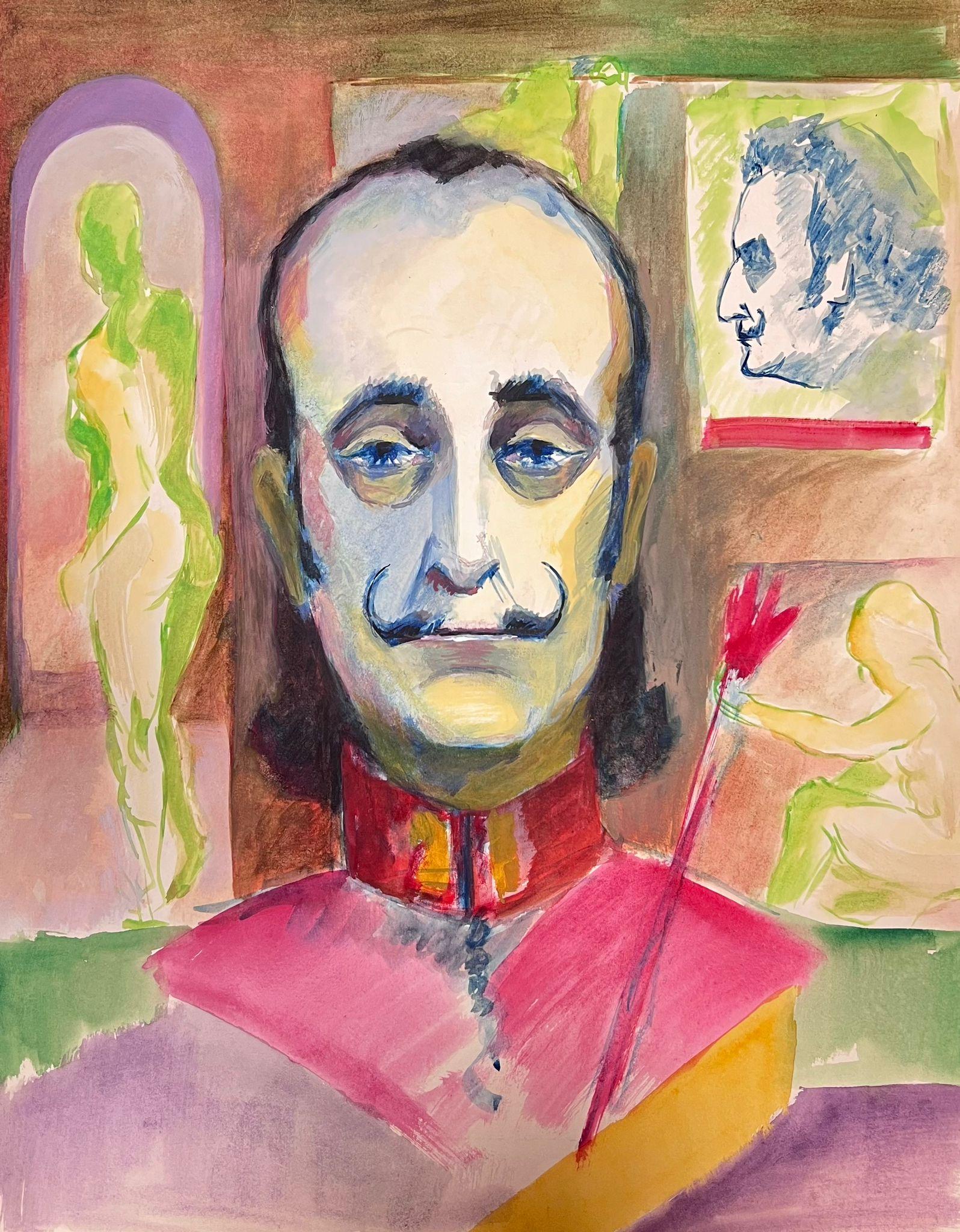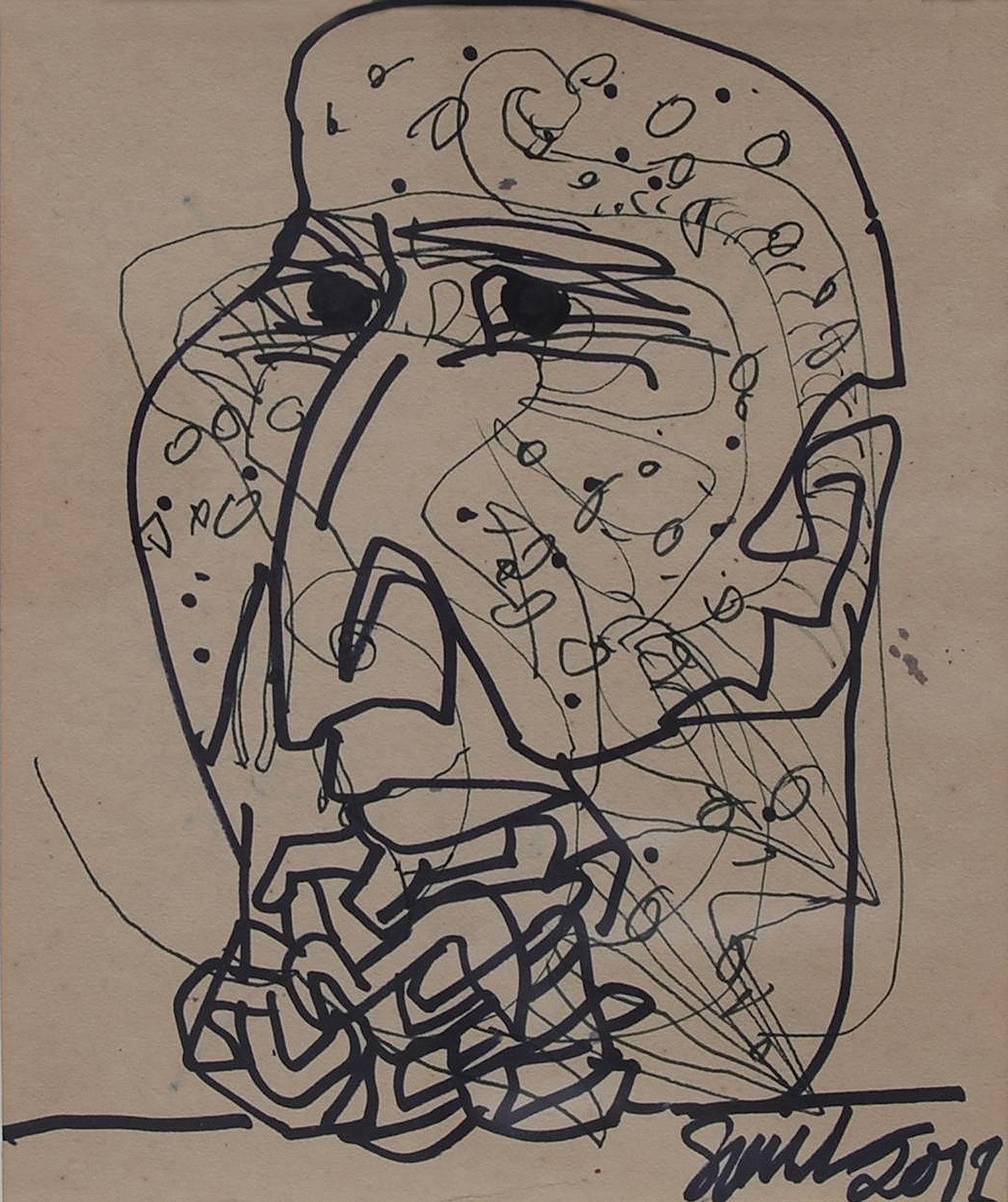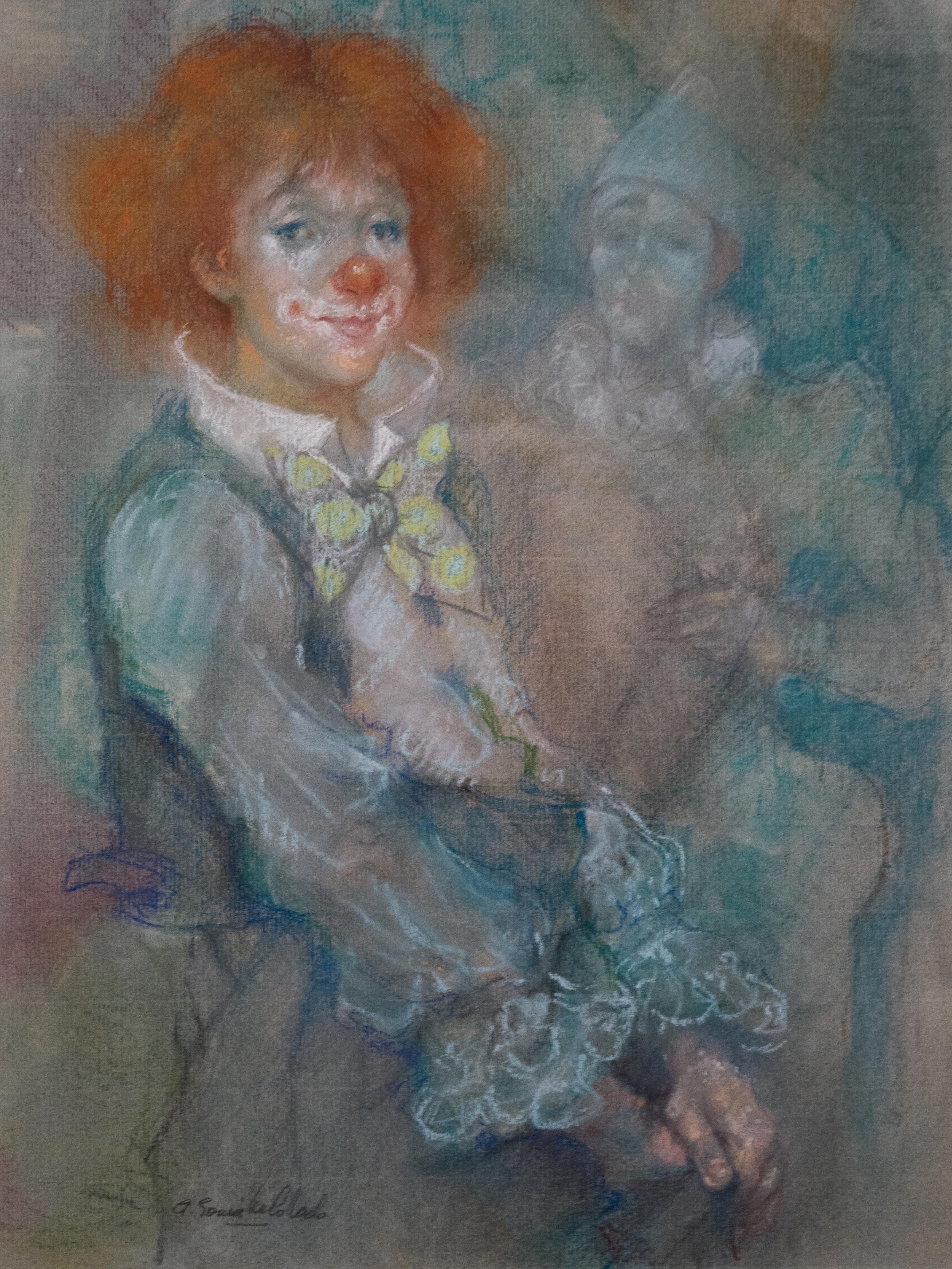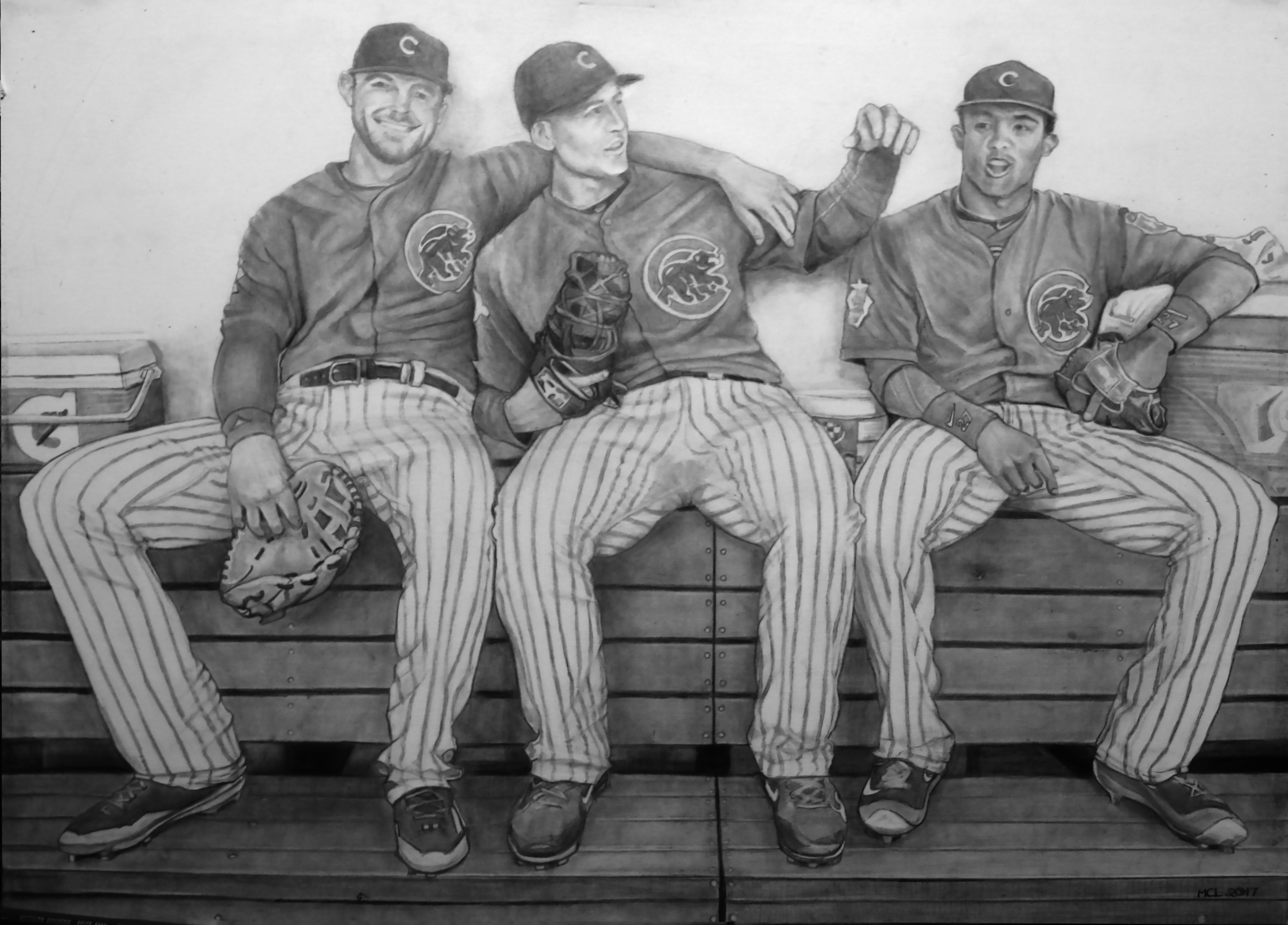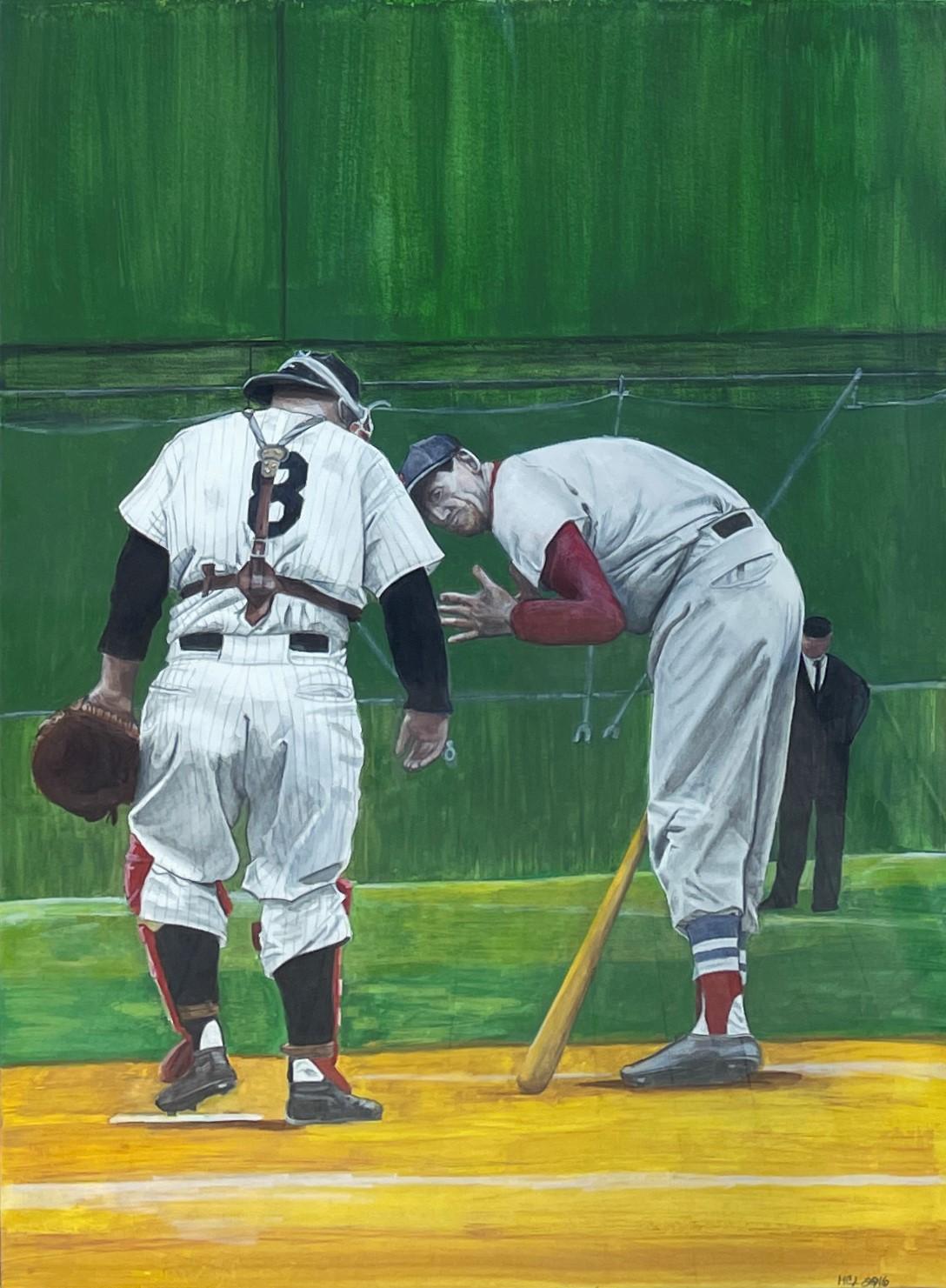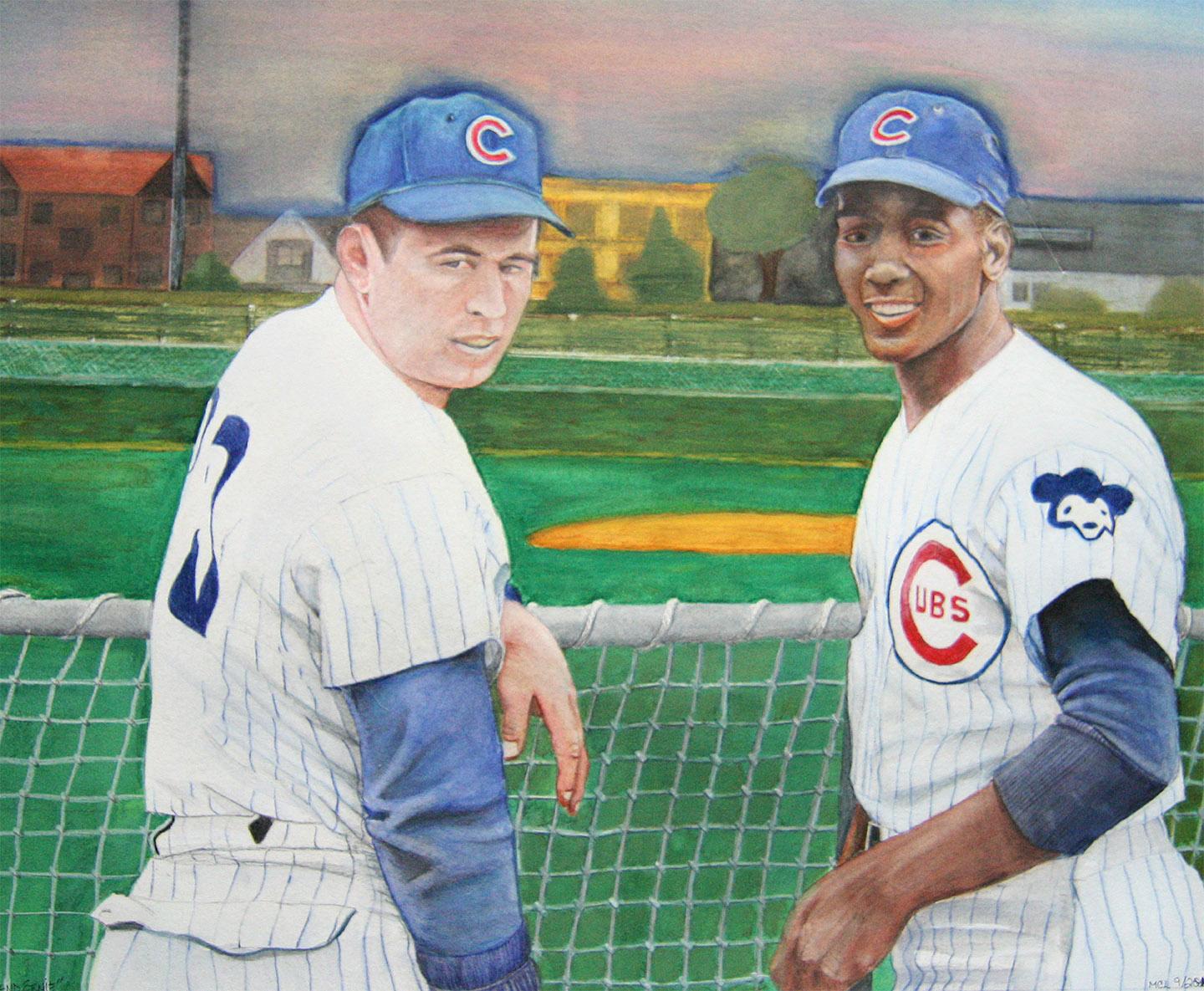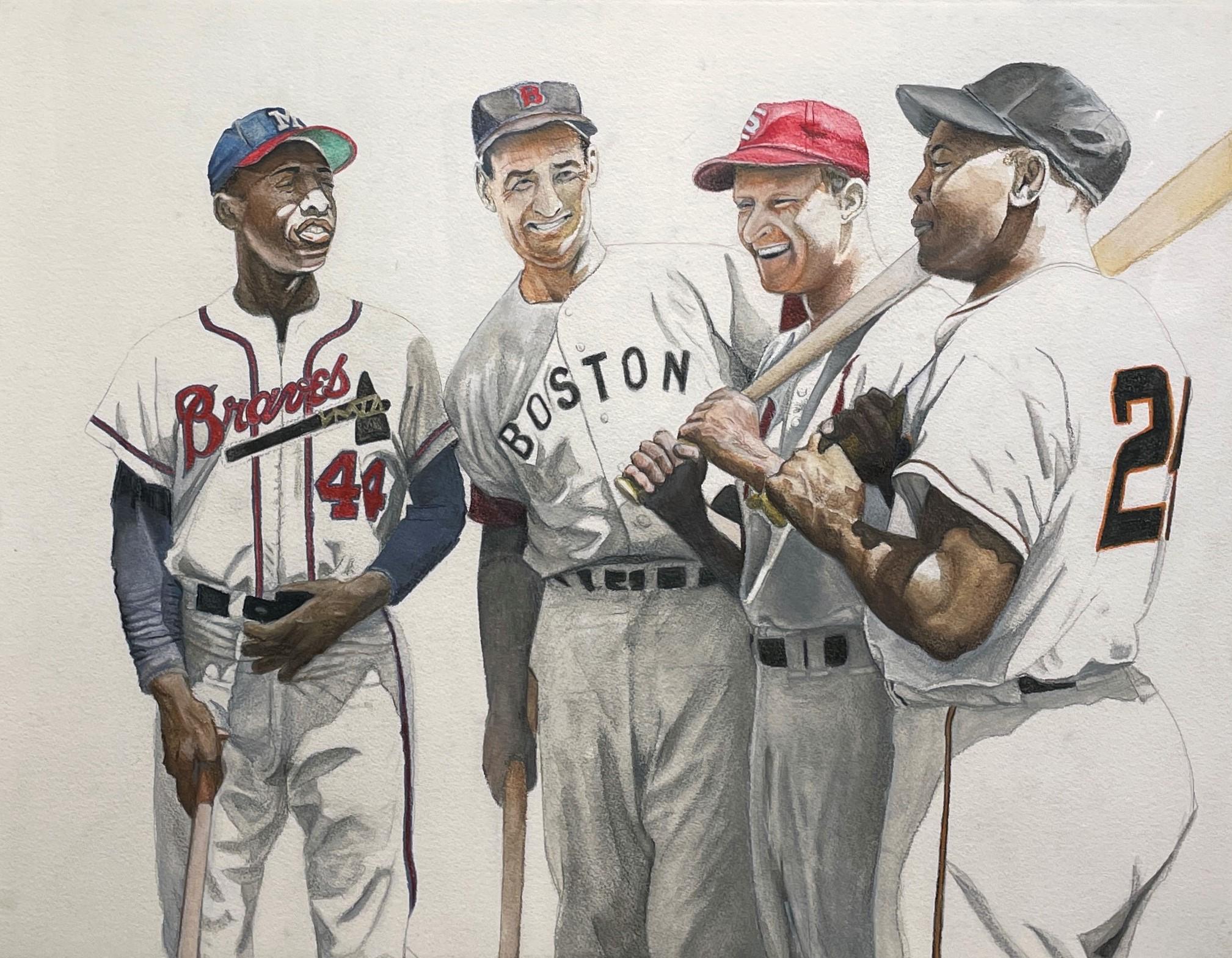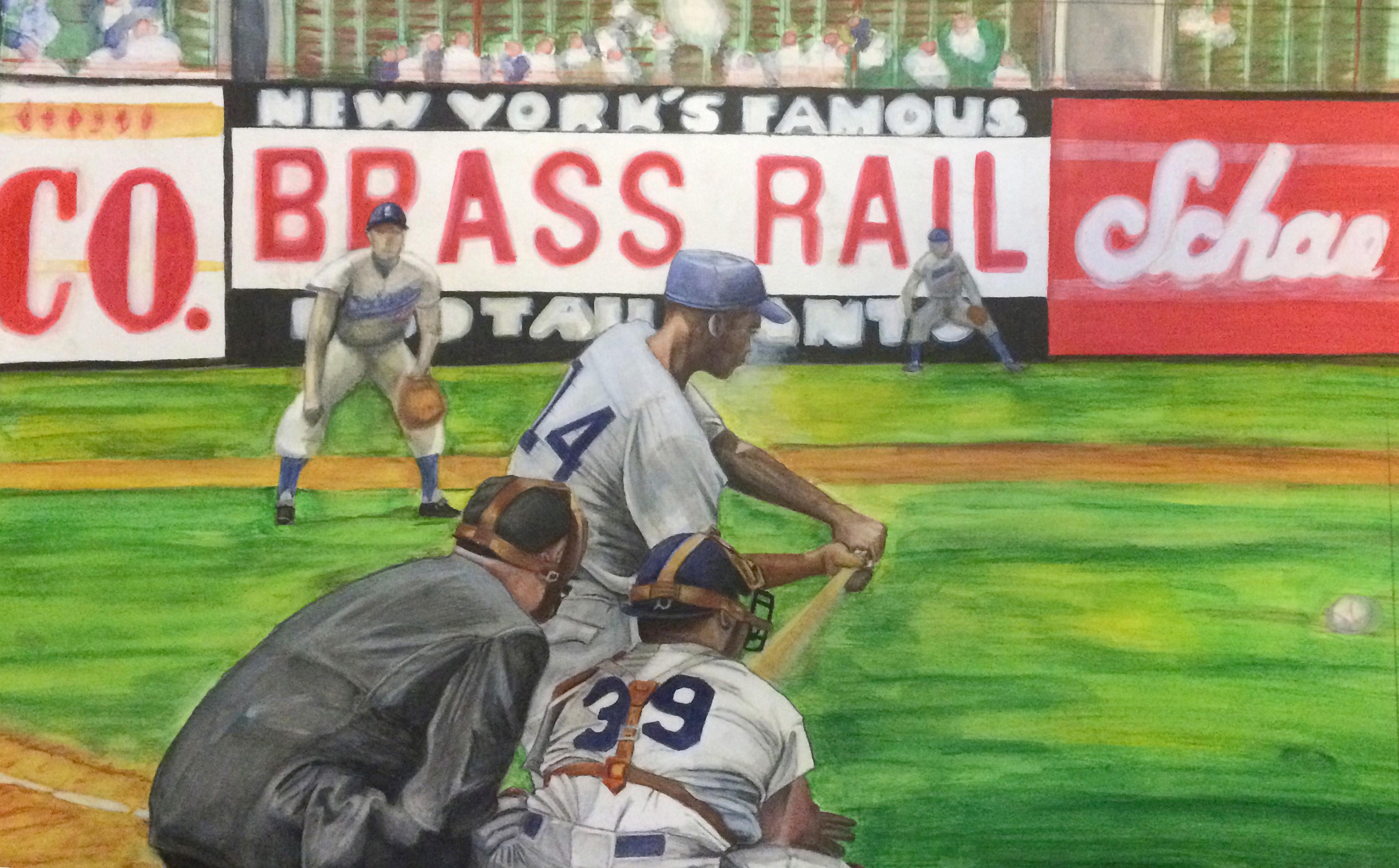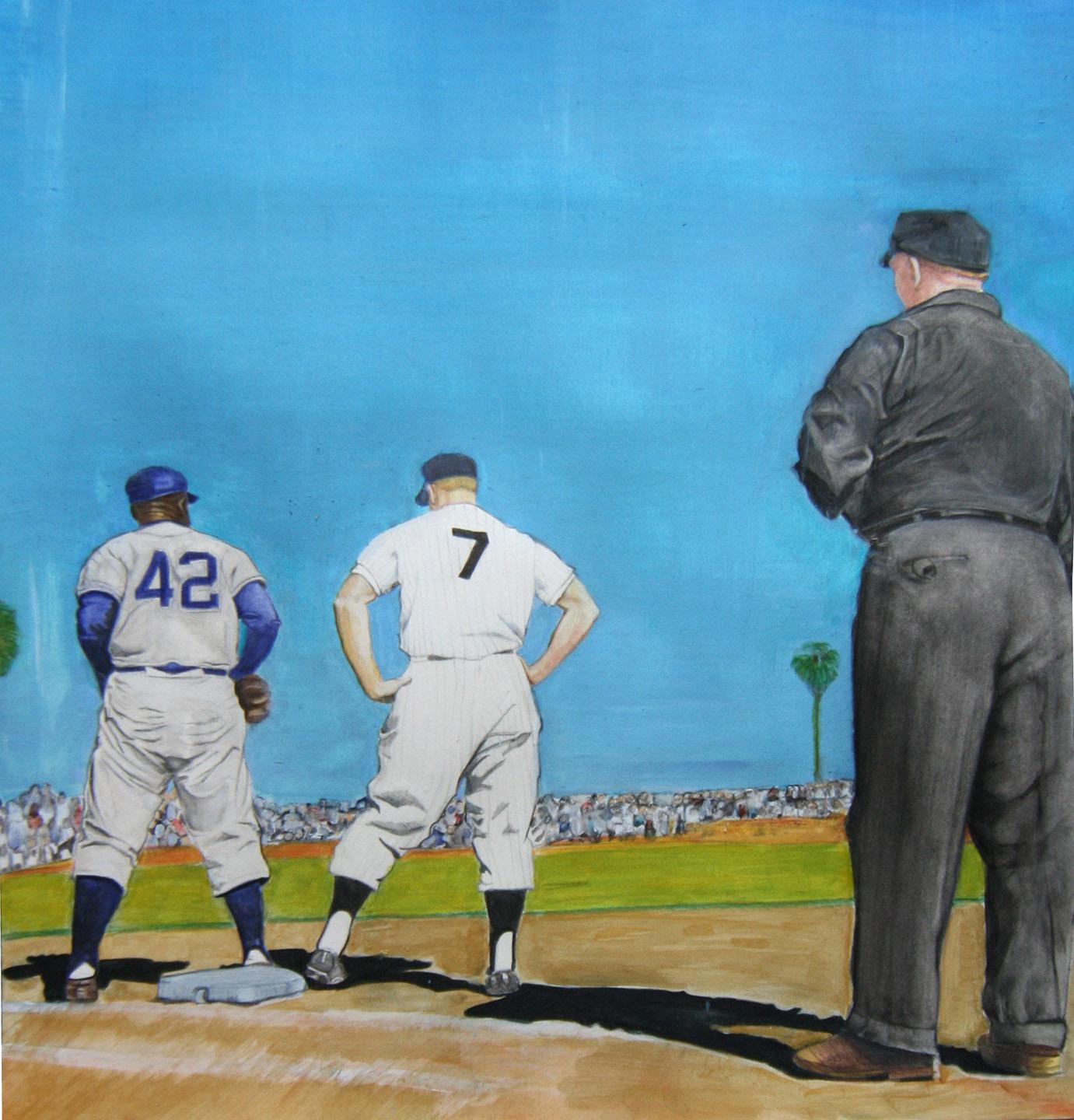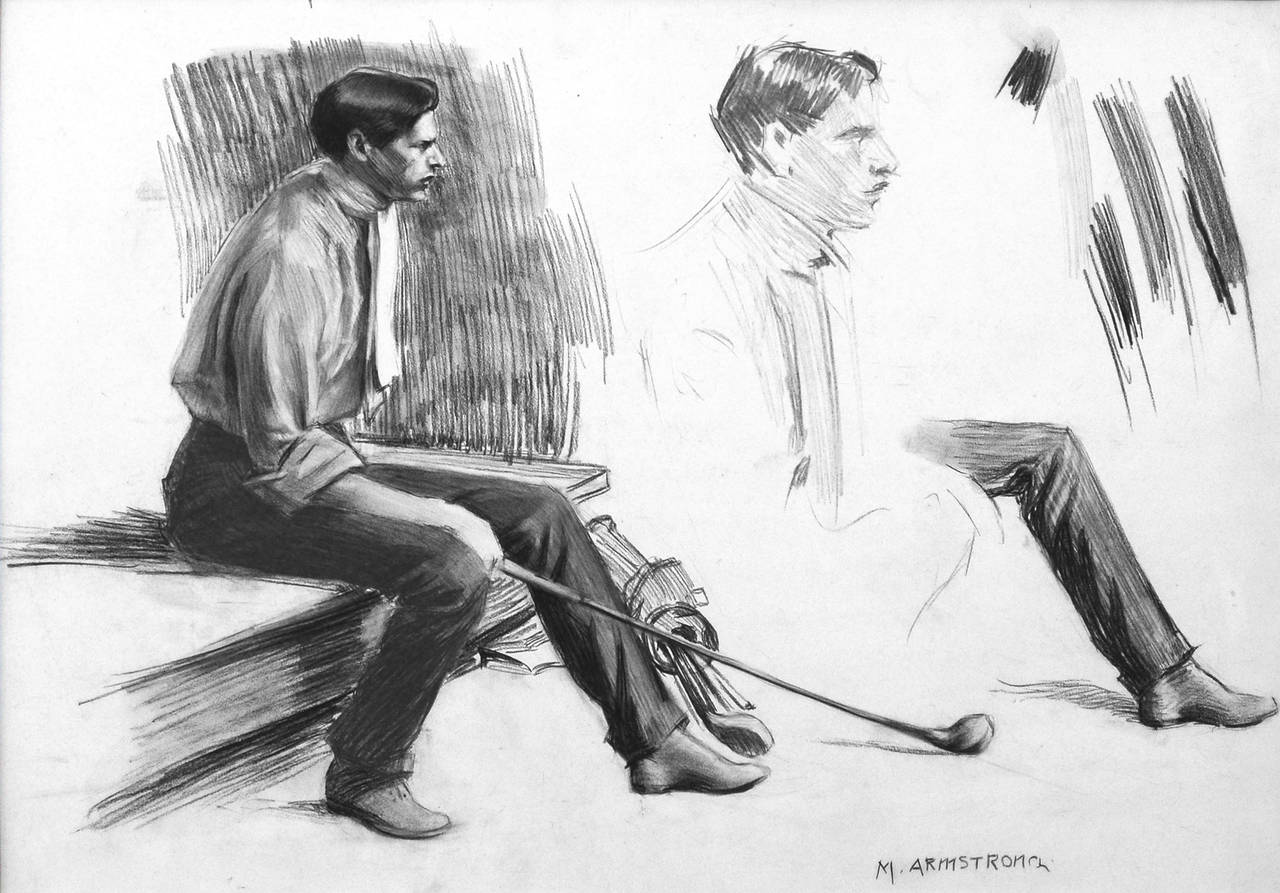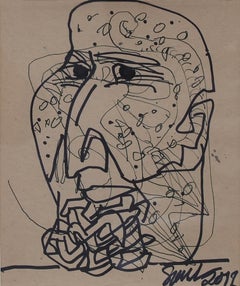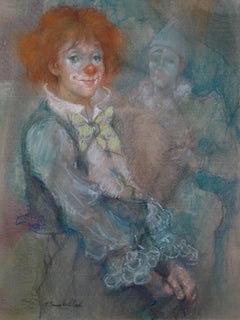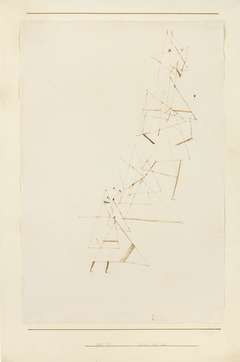
Small and Big
View Similar Items
Paul KleeSmall and Big1929
1929
About the Item
- Creator:Paul Klee (1879-1940, German)
- Creation Year:1929
- Dimensions:Height: 21.66 in (55 cm)Width: 14.18 in (36 cm)
- Medium:
- Movement & Style:
- Period:
- Condition:
- Gallery Location:Munich, DE
- Reference Number:Seller: 1868-211stDibs: LU456115860
Paul Klee
Paul Klee was a Swiss-born German artist. His highly individual style was influenced by movements in art that included Expressionism, Cubism and Surrealism.
Klee was a natural draftsman who experimented with and eventually deeply explored color theory, writing about it extensively; his lectures Writings on Form and Design Theory (Schriften zur Form und Gestaltungslehre) — which were published in English as the Paul Klee Notebooks — are held to be as important for modern art as Leonardo da Vinci's A Treatise on Painting was for the Renaissance.
Klee and his colleague, Russian painter Wassily Kandinsky, both taught at the Bauhaus school of art, design and architecture in Germany. His works reflect his dry humor and his sometimes childlike perspective, his personal moods and beliefs, and his musicality.
Find original Paul Klee prints and other art on 1stDibs.
(Biography provided by Cerbera Gallery)
- Face, Ink on Paper Black and Brown by PadmaShree Artist Sunil Das "In Stock"By Sunil DasLocated in Kolkata, West BengalSunil Das - 7.25 x 8.5 inches (unframed size) Ink on Paper Inclusive of shipment in ready to hang form. Sunil Das (1939-2015) was a Master Modern Indian Artist from Bengal. Extremel...Category
2010s Modern Figurative Paintings
MaterialsInk, Paper
- The Two Clowns (Les Deux Clowns) by Antonio Gonzalez ColladoBy Antonio Gonzalez ColladoLocated in Stockholm, SEArtist: Antonio Gonzalez Collado The Two Clowns (Les Deux Clowns) mixed media on paper signed artist studio stamp on the back dimensions (motif) 15...Category
Late 20th Century Modern Portrait Drawings and Watercolors
MaterialsPaper, Mixed Media
- Rare Modernist Hungarian Rabbi Pastel Drawing Gouache Painting Judaica Art DecoBy Hugó ScheiberLocated in Surfside, FLRabbi in the synagogue at prayer wearing tallit and tefillin. Hugó Scheiber (born 29 September 1873 in Budapest – died there 7 March 1950) was a Hungarian modernist painter. Hugo Scheiber was brought from Budapest to Vienna at the age of eight where his father worked as a sign painter for the Prater Theater. At fifteen, he returned with his family to Budapest and began working during the day to help support them and attending painting classes at the School of Design in the evening, where Henrik Papp was one of his teachers. He completed his studies in 1900. His work was at first in a post-Impressionistic style but from 1910 onward showed his increasing interest in German Expressionism and Futurism. This made it of little interest to the conservative Hungarian art establishment. However, in 1915 he met the great Italian avant-gardist Filippo Tommaso Marinetti and the two painters became close friends. Marinetti invited him to join the Futurist Movement. The uniquely modernist style that he developed was, however, closer to German Expressionism than to Futurism and eventually drifted toward an international art deco manner similar to Erté's. In 1919, he and his friend Béla Kádar held an exhibition at the Hevesy Salon in Vienna. It was a great success and at last caused the Budapest Art Museum to acquire some of Scheiber's drawings. Encouraged, Scheiber came back to live in Vienna in 1920. A turning point in Scheiber's career came a year later, when Herwarth Walden, founder of Germany's leading avant-garde periodical, Der Sturm, and of the Sturm Gallery in Berlin, became interested in Scheiber's work. Scheiber moved to Berlin in 1922, and his paintings soon appeared regularly in Walden's magazine and elsewhere. Exhibitions of his work followed in London, Rome, La Paz, and New York. Scheiber's move to Germany coincided with a significant exodus of Hungarian artists to Berlin, including Laszlo Moholy-Nagy and Sandor Bortnyik. There had been a major split in ideology among the Hungarian avant-garde. The Constructivist and leader of the Hungarian avantgarde, Lajos Kassák (painted by Hugó Scheiber in 1930) believed that art should relate to all the needs of contemporary humankind. Thus he refused to compromise the purity of his style to reflect the demands of either the ruling class or socialists and communists. The other camp believed that an artist should be a figurehead for social and political change. The fall out and factions that resulted from this politicisation resulted in most of the Hungarian avant gardists leaving Vienna for Berlin. Hungarian émigrés made up one of the largest minority groups in the German capital and the influx of their painters had a significant effect on Hungarian and international art. Another turning point of Scheiber's career came in 1926, with the New York exhibition of the Société Anonyme, organized by Katherine Dreier. Scheiber and other important avant garde artists from more than twenty-three countries were represented. In 1933, Scheiber was invited by Marinetti to participate in the great meeting of the Futurists held in Rome in late April 1933, Mostra Nazionale d’Arte Futurista where he was received with great enthusiasm. Gradually, the Hungarian artists began to return home, particularly with the rise of Nazism in Germany. Kádar went back from Berlin in about 1932 and Scheiber followed in 1934. He was then at the peak of his powers and had a special flair in depicting café and cabaret life in vivid colors, sturdily abstracted forms and spontaneous brush strokes. Scheiber depicted cosmopolitan modern life using stylized shapes and expressive colors. His preferred subjects were cabaret and street scenes, jazz musicians, flappers, and a series of self-portraits (usually with a cigar). his principal media being gouache and oil. He was a member of the prestigious New Society of Artists (KUT—Képzőművészek Új Társasága)and seems to have weathered Hungary's post–World War II transition to state-communism without difficulty. He continued to be well regarded, eventually even receiving the posthumous honor of having one of his images used for a Russian Soviet postage stamp (see image above). Hugó Scheiber died in Budapest in 1950. Paintings by Hugó Scheiber form part of permanent museum collections in Budapest (Hungarian National Museum), Pecs (Jannus Pannonius Museum), Vienna, New York, Bern and elsewhere. His work has also been shown in many important exhibitions, including: "The Nell Walden Collection," Kunsthaus Zürich (1945) "Collection of the Société Anonyme," Yale University Art Gallery, New Haven, Connecticut (1950) "Hugó Scheiber: A Commemorative Exhibition," Hungarian National Museum, Budapest (1964) "Ungarische Avantgarde," Galleria del Levante, Munich (1971) "Paris-Berlin 1900-1930," Centre Georges Pompidou, Paris (1978) "L’Art en Hongrie, 1905-1920," Musée d’Art et l’Industrie, Saint-Etienne (1980) "Ungarische Avantgarde in der Weimarer Republik," Marburg (1986) "Modernizmus," Eresz & Maklary Gallery, Budapest (2006) "Hugó Scheiber & Béla Kádár," Galerie le Minotaure, Paris and Tel Aviv (2007) Hugó Scheiber's paintings continue to be regularly sold at Sotheby's, Christie's, Gillen's Arts (London), Papillon Gallery (Los Angeles) and other auction houses. He was included in the exhibition The Art Of Modern Hungary 1931 and other exhibitions along with Vilmos Novak Aba, Count Julius Batthyany, Pal Bor, Bela Buky, Denes Csanky, Istvan Csok, Bela Czobel, Peter Di Gabor, Bela Ivanyi Grunwald, Baron Ferenc Hatvany, Lipot Herman, Odon Marffy, C. Pal Molnar...Category
Early 20th Century Modern Figurative Paintings
MaterialsPaper, Charcoal, Pastel, Watercolor, Gouache
- Male Wacky Artist Portrait Swirly Moustache French PaintingLocated in Cirencester, GloucestershireFrench Expressionist Portrait by Guy Nicod (French 1923 - 2021) watercolour on artist paper, unframed painting : 19.5 x 15.5 inches provenance: artists estate, France condition: very...Category
Mid-20th Century Modern Figurative Paintings
MaterialsWatercolor
- World Series Bench - Chicago Cubs, Bryant, Rizzo & Russell, Graphite on PaperBy Margie LawrenceLocated in Chicago, ILThe "World Series Bench" by Margie Lawrence consists of three key players in the Chicago Cubs for the long awaited World Series win in 2016. From the ...Category
2010s Contemporary Portrait Drawings and Watercolors
MaterialsGraphite, Paper
- Yogi and Ted - Baseball Greats Yogi Berra and Ted Williams, Watercolor on PaperBy Margie LawrenceLocated in Chicago, ILLawrence Peter "Yogi" Berra was an American professional baseball catcher who later took on the roles of manager and coach. He played 19 seasons in Ma...Category
2010s Contemporary Portrait Drawings and Watercolors
MaterialsWatercolor, Paper
